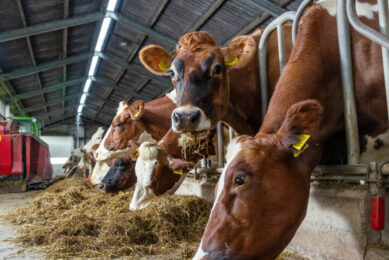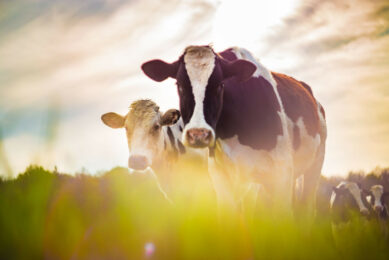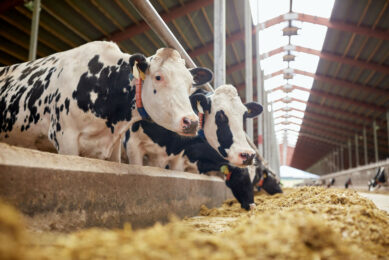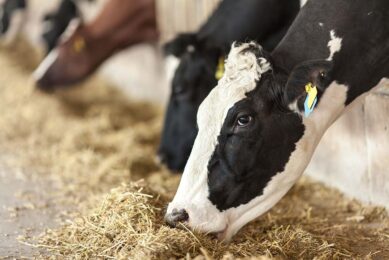Strategies to reduce nitrogen for more efficient ruminants
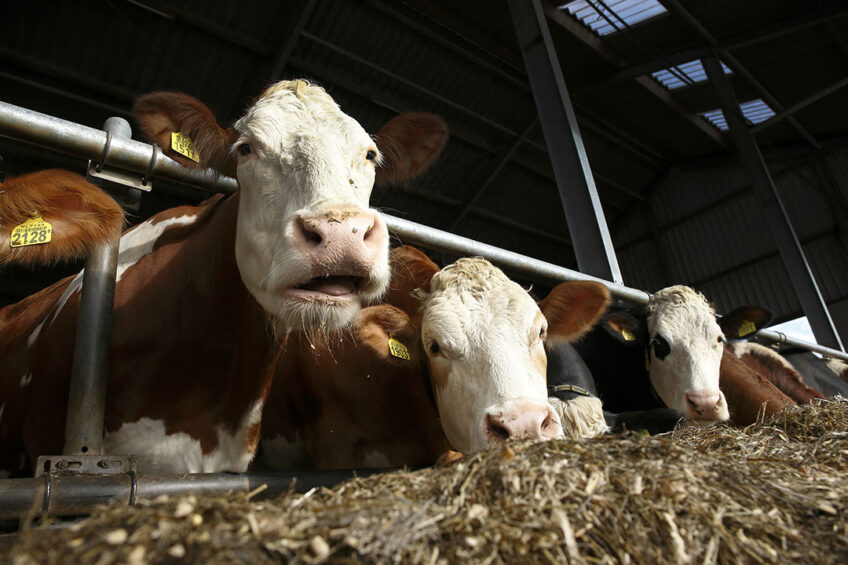
Reducing the amount of nitrogen that ruminants excrete is not only better for the environment but is also an opportunity for ruminants to produce more efficiently. Thus, balancing diets for amino acids can maximise dairy herd profitability and improve nitrogen efficiency.
Ruminant production systems convert vegetable protein into animal protein, contributing substantially to human nutrition through the production of milk and meat. Rumen micro-organisms process lignocellulose from low quality roughage into volatile fatty acids and energy, to transfer non-protein nitrogen into microbial protein. This is how ruminants can produce food of animal origin without competition for feed with non-ruminants and humans. Feed-efficient ruminant production is a complex system starting in many situations with better nitrogen (N) efficiency (Flachowsky et al., 2013).

Depending on the animal species, ration and management, between 5% and 45% of the N in vegetable protein is converted and deposited in the meat or milk. The other 55–95% is excreted (urine or manure) and can be used as a source of nutrients for plant production (Oenema and Tamminga, 2005). However, the efficiency of reconversion of the N into plant protein is limited: only a maximum of 60% of the N applied to the soil can be converted to vegetable protein. The rest is lost, contributing to the environmental problem. This is especially important when we consider that the estimated overall amount of N excreted by animals is comparable with the annual consumption of N fertilisers, if not higher.
Strategies to improve efficiency
Strategies to reduce losses and improve efficiency of ruminant production systems rely on an optimal supply of rumen-degradable N and an optimal efficiency of utilisation of absorbed amino acids (AAs) (Dijkstra et al., 2013). Generally, in ruminants the observed efficiency of conversion between N consumed and N deposited into protein varies between 20% and 32%, but the maximum theoretical efficiency should be between 40% and 45% (Van Vuuren and Meijs, 1987; Hvelplund and Madsen, 1995; Dijkstra, 2013). A practical objective would be to achieve around 40% conversion; this goal can be reached by formulating for low crude protein (CP) and balancing for AAs, as described in this article.
Ruminant protein nutrition has 3 big challenges. Firstly, the rumen contains a high number of microorganisms which makes balancing the protein profile difficult, and typically this leads to a very low feed and N efficiency. Secondly, it is not always easy to obtain high fodder quality (that provides energy) in enough quantity (minimum 40% of the total dry matter intake to avoid health problems and an even lower efficiency). Finally, it is crucial to ensure a good mixing process in feed production to avoid the cow sorting the feed by preference and consequently running the risk of acidosis and low N efficiency.
 Canola meal in dairy rations
Canola meal in dairy rations
New research explains why use of this high-protein ingredient has increased in many countries.
On the other hand, formulation is usually based on designing the lowest cost ration that provides the minimum level of required nutrients for a level of milk production, but the feed cost is up to 70% of the total production cost. Improving efficiency of N conversion has one of the highest impacts on farm profitability (Bach, 2012; Tozer, 2012; McGrath et al., 2018).
Over the last few years, tremendous efforts and research have been carried out to refine the protein requirements of dairy cows. Our growing understanding of cow requirements has led to recognition of 2 sets of protein requirements: rumen-degradable protein (RDP) and rumen-undegradable protein (RUP). Metabolically the cow, of course, has specific requirements for individual AAs, rather than metabolisable protein (MP) per se. Together, the complex microbial metabolic activity in the rumen and processes in the intestines make the study of N metabolism in ruminants more challenging than in the case of non-ruminants.
Amino acids
AAs are the building blocks of milk and body proteins and are considered one of the most important nutrients in dairy cow nutrition. Many of these AAs need to be supplemented in the diet, because they cannot be synthesised quickly enough to meet the requirements of producing cows. Therefore, these amino acids are known as essential AAs. Inadequate supply of these essential AAs can limit milk and milk protein yield. The essential AA that is present in MP in the smallest supply relative to the cow’s requirements is referred to as the limiting AA. Methionine (Met) and lysine (Lys) have been recognised as the first limiting AAs for lactating dairy cows under most feeding practices. This is fundamentally true because feed proteins have lower concentrations of Met and Lys when compared to their concentrations in milk and microbial protein.
Mid-range CP diets in Europe are unable to meet Met or Lys needs with the use of dietary feed ingredients, therefore the use of rumen-protected supplements is needed. It is remarkable that Met and Lys work in concert: both AAs are necessary for the best precise feeding to achieve the maximum production performance without overfeeding protein. Balancing dairy rations for AAs, rather than CP%, is the state-of-the-art approach when it comes to protein nutrition.
 Sustainability and Welfare special: Reserve your space
Sustainability and Welfare special: Reserve your space
Dairy Global, All About Feed, Poultry World and Pig Progress are publishing a special magazine on Sustainability and Welfare.
Schwab et al. (2004) compared MP, Lys and Met supplies as predictors of milk production and milk protein yield. The results showed that Met and Lys supplies are better predictors of both milk production and milk protein yield than the supply of MP. This is because when one of the AAs is limiting, this effectively causes an oversupply of all other AAs to the cow. When the missing block (the limiting AA) is provided, a new molecule of milk protein can be synthesised. Therefore, surplus of other AAs decreases and the utilisation efficiency of MP improves. When dairy nutritionists rely only on the amount of MP available with no consideration for limiting AAs, the actual milk yield will – in almost all cases – be lower than expected. This clearly indicates that, although the supply of total MP might be adequate, the balance of the available AAs can be incorrect, which limits milk production. It is widely accepted that, by formulating with individual AAs, the improvement in MP utilisation efficiency will provide the dairy nutritionist with an opportunity to formulate diets with lower CP content without compromising the yield of milk and milk components.
However, it is important to accurately predict the exact amount of metabolisable Met or Lys that can be used by the individual cow to reach this level of precision in our diets. Accurate and precise measurement techniques are imperative for obtaining reliable experimental results on N and AA utilisation. Knowing the rumen-protection rate and intestinal availability of the RP-AA supplement gives us the primary AA available to the host animal (Hristov et al., 2019). According to Kemin’s experience, when AA nutrition is implemented applying the latest available nutritional knowledge and with the right rumen-protected AA supplements (both methionine and lysine), better animal performance with better nitrogen efficiency (Table 1) is observed.
In conclusion, cutting-edge ruminant nutritionists are already balancing their diets for AAs rather than for CP.
References are available upon request.
Adopting the concept of balancing for individual AAs can bring endless opportunities for maximising dairy herd profitability. With continuous increases in feed prices and milk production costs, diet reformulation with low CP content while balancing for AAs and using rumen-protected Met and Lys can maximise MP utilisation as well as dairy cow production and health. Additionally, balancing for the first 2 limiting AAs will decrease the overall N excretion to the environment, improving N and feed efficiency.



